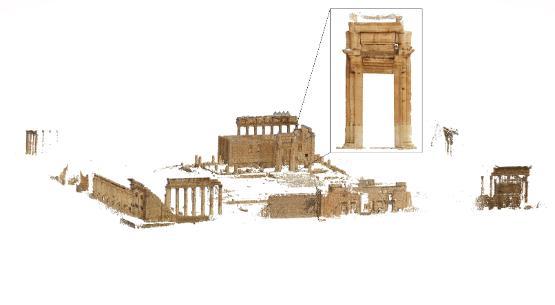£3m archaeology grant to boost Bradford’s digital research capability

The University of Bradford been awarded £3m by the Arts and Humanities Research Council, part of UK Research and Innovation, to develop research into two significant collections: its world-leading collection of human skeletal remains and its digital heritage collection of 3D replication of heritage sites, museum collections, and large-scale marine surveys of lost landscapes.
The grant will enable the University to upgrade its data-capture and data-sharing technology, making it possible to integrate its digital collections and share them online with researchers and the public, allowing much greater use of this data for research and education.
The University of Bradford has an immense digital heritage collection, including human skeletal remains, world heritage landscapes and marine environments, that has become a hub for researchers worldwide. However, over time the analysis of and access to this collection has become limited by the technical infrastructure.
Upgrading its technological capabilities will allow Bradford to digitise vastly more of its biological collections and to place these more easily within real-world or reconstructed digital environments, providing a rich virtual environment for researchers and educators.
The project - Capability for Human Bioarchaeology and Digital Collections - will upgrade both the University’s biochemical analysis facilities and its ability to document objects and sites in 3D. By upgrading its x-ray capabilities to a dedicated CT and micro-CT facility the University will be able to capture information in the finest detail with minimal handling of fragile specimens, improving its world-class capability for imaging in human bioarchaeology research.
Bradford has pioneered the development of digitised data online through its Digitised Diseases project, where researchers access images of bone modifications that resulted from a range of diseases.
Digitised Diseases shares data on human skeletal remains through the Biological Anthropology Research Centre (BARC). BARC, a focal point for international research, specialises in the analysis of modern and ancient human skeletal remains, a fragile and limited resource.
Bradford is also a leader in techniques to gather data from archaeological sites, working with past heritage landscapes, the historic environment, and the contemporary environment.
Dr Cathy Batt, Head of the University’s School of Archaeological and Forensic Sciences, said: “By increasing the data available from the human remains collection and combining it with environmental and site data in our collections a rich digital discoverable and searchable research environment will be created. This specifically allows capacity to place our biological collections within real-world or reconstructed digital environments, providing a valuable virtual environment for researchers and educators.”
The proposal involved a team of academics from the School led by Professor Andrew Wilson.
The University was recently awarded a coveted Queen's Anniversary Prize for Higher and Further Education for its world-leading work in developing archaeological technology and techniques and its influence on practice, policy and society.
